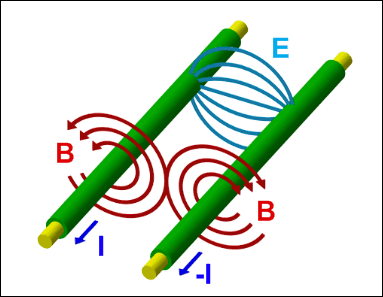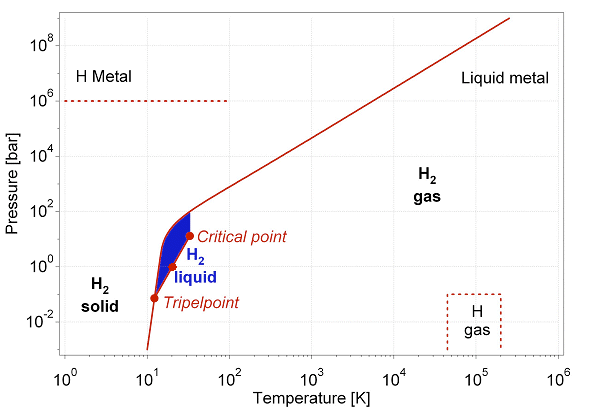© Science AdminsVerschuur findings on CMB, galactic filaments, space neutral and ion densities, etc.Interacting Galactic Neutral Hydrogen Filaments and Associated High-Frequency Continuum Emission - http://arxiv.org/format/1302.4308 - verschuur@aol.comThe following selected statements from the above paper seem to suggest that:(1) the cosmic microwave background is a local effect;*6906(2) galactic filaments contain excess electrons not produced from ionization of neutral hydrogen H I etc;(3) neutral filaments and electron filaments are closely associated;(4) the temperature of the filaments or clouds is only about 100 K, rather than the conventionally expected 8,000 K;(5) halo formation involves flashes of Lyman alpha emissions.1. (The possible role of a mysterious plasma phenomenon known as the Critical Ionization Velocity effect in affecting the line widths of the broad components is discussed [].) [We can look up where it's discussed, if needed.]2. First, given that the free-free emission from electrons appears to work quite well as outlined in Paper 2, other than the absence of associated H alpha radiation, what might be the source of electrons so as to avoid the H alpha dilemma?3. A second question concerns what mechanism is operating to cause the H I and the electrons to cluster?4. Also, why would the neutrals and electrons cluster in slightly offset directions?5. Lastly, if a source of electrons can be identified and a mechanism for clustering suggested, is it still possible to account for production of the high-frequency continuum radiation through invoking free-free emission from electrons?*105346. Unfortunately, essentially nothing is known about the clumping of these electrons along a given line-of-sight.7. In contrast, the clumping of the H I is its most basic characteristic, producing morphologies such as seen in Fig. 1.8. [We're interested in] determining whether a reasonable set of parameters can be found that can be used with the electron Brehmstrahlung model to account for the observed amplitudes of the high-frequency continuum signals found in the ILC data.9. ([It seems] that electrons exist in abundance that are not created by localized ionization of neutral hydrogen.)10. The fact that the curves in Fig. 9 for North Pair and South Pair appear to encompass a region of phase space that is reasonable, as regards the required electron column densities and distances for the 100 K regime, indicates that the possibility that the ILC structures are indeed located in the galactic disk relatively close to the Sun should be seriously considered.11. But what mechanism would simultaneously act to clump the neutrals and the electrons and have them physically separated yet close*[ly] associated in space*[?]12. Another way of considering this is to recognize that the offset between the H I and ILC peaks is one of e/H abundance variations in interstellar space, either along a given filament or between adjacent volumes of space.13. A little known instability occurring within flux tubes is described by Marklund (1979) who suggested that if an electric field is present in a plasma permeated by a magnetic field and has a component perpendicular to the field, the f E x f B force will cause electrons and ions, but not neutral particles, to migrate to the axis of a flux tube.14. As Peratt & Verschuur [] note, because of different ionization potentials of various atomic species and cooling within the filaments, ionic species will then separate within a flux tube.15. Another possibility for separating electrons and neutrals may involve interacting magnetically controlled filaments.16. This raises the interesting possibility that ["]magnetic reconnection["] may play a role in creating pockets of H I that are pulled away from a central X-neutral point where magnetic fields, likely to be present in the filaments, are reconnecting.17. The continuum radiation revealed in the ILC data is then being produced at the X-neutral point.18. Unfortunately the necessary theory to help account for the data invoking magnetic reconnection does not yet appear to exist.19. Associated H alpha radiation at the location of the ILC peaks is not expected because the source of electrons does not require the localized ionization of H I as was hypothesized in Paper 2.20. [] the spectroscopic detection of [] a halo amounts to a "snapshot" of a particularly interactive phase in their formation, illuminated by a "flash" of Ly α emission.
Lastly, if a source of electrons can be identified and a mechanism for clustering suggested, is it still possible to account for production of the high-frequency continuum radiation through invoking free-free emission from electrons?I assume that Verschuur is talking about black-body radiation here. Free-free (i.e., Bremsstrahlung) radiation can theoretically produce BB radiation, but it will be vastly overshadowed by spectral lines from free-bound emissions. Only graphite and supercritical hydrogen have been demonstrated to produce BB radiation in the laboratory. In space, I'm going with supercritical hydrogen.Charles, you said: "So in space, we can expect mildly separated but closely associated opposite charge streams due to the effects of magnetic and electric fields."
I had the impression that Verschuur's paper only mentioned observations of neutral filaments and closely associated electron filaments or regions. Did I overlook positive filaments or regions?*11192
I see online that free-free emission is defined this way: "An electron passing close to an ion feels an acceleration. An accelerating charge produces radiation. This is free-free emission, also called Bremsstrahlung: – Important at high temperatures, where the plasma is highly ionized. – Depends upon temperature T, ion charge Z, and electron, ion densities n e and n i." What is free-bound emission that you mention?*11198 I may not have time to look it up for a while.
Do you agree that Verschuur's paper makes these summary points? And do you agree with them?
(1) the cosmic microwave background is a local effect;
(2) galactic filaments contain excess electrons not produced from ionization of neutral hydrogen H I etc;
(3) neutral filaments and electron filaments are closely associated;
(4) the temperature of the filaments or clouds is only about 100 K, rather than the conventionally expected 8,000 K;
(5) halo formation involves flashes of Lyman alpha emissions.I assume that #1 is indicated by the close association between the H I filaments and the electron filaments. Do you agree? Re #2, where would the excess electrons come from, if not from the neutral hydrogen H I? And could there be such large regions of space with neutral and negative filaments, but few positive ones? Re #5, do you have any idea what the flashes of Lyman alpha emissions in the halo (galactic halo?) would be from?
Doesn't supercritical mean above a critical temperature and pressure? What are the critical temperature and pressure of hydrogen? Is the critical temperature below 100K, which Verschuur thinks is the temperature of the filaments?*11186
Do you have a link to where you may already have explained all this?
I had the impression that Verschuur's paper only mentioned observations of neutral filaments and closely associated electron filaments or regions. Did I overlook positive filaments or regions?No, you didn't — I think that he did. :) I didn't study the data in detail, but something about there being a charge imbalance on a large scale doesn't sound right. So I "think" that he's looking at a charge separation instead.
What is free-bound emission that you mention?That's photon emission on electron update (i.e., where a free electron gets captured by a +ion).
(1) the cosmic microwave background is a local effect;I don't know much about this. Robitaille seems to make a good case for the CMB coming from the Earth's oceans, simply as one of the other frequencies emitted by 300 K water. Does Verschuur mean "local" like that (i.e., local to us), or does he mean local to the object in the telescope (versus some sort of diffuse after-glow from the big bang)?Lloyd said:
(2) galactic filaments contain excess electrons not produced from ionization of neutral hydrogen H I etc;That appears to be what he's saying, but I don't start out convinced of this.Lloyd said:
(3) neutral filaments and electron filaments are closely associated;I have an easier time understanding how +ions and electrons would be closely associated. This might be just my ignorance, and I don't want to discount the data because they don't make sense to me. But considering the extremely vigorous nature of the electric force, charge imbalances out to raise eyebrows.Lloyd said:
(4) the temperature of the filaments or clouds is only about 100 K, rather than the conventionally expected 8,000 K;I didn't look into this. I certainly agree that 8,000 K black-body radiation isn't going to come from a gas cloud — it can only come from a supercritical fluid. So it has to be coming from inside a star. But I didn't track down why he's saying the gas cloud is only 100 K.Lloyd said:
(5) halo formation involves flashes of Lyman alpha emissions.I don't know what he means by this.
Doesn't supercritical mean above a critical temperature and pressure? What are the critical temperature and pressure of hydrogen? Is the critical temperature below 100K, which Verschuur thinks is the temperature of the filaments?"Supercritical" literally means above the "critical point", which is where the temperature and pressure conspire to create a new property set. The matter is denser than a liquid, though it is compressible like a gas. And the electron shells merge, creating a shared electron cloud, like in a solid. According to the following diagram, the critical point of hydrogen is at around 101.2 K and 101.1 bar. But blackbody radiation only starts happening when you get into the thousands of K.Verschuur's paper said the so-called CMB correlates to galactic surroundings near the solar system. I've heard Thornhill and maybe others mention that this CMB correlates to Earth's oceans, as you say, but Verschuur didn't mention that, unless I overlooked it. Here's something the paper said (see the Sources section at Interacting Galactic Neutral Hydrogen Filaments at statements 6 and 7):
"The previously hypothesized model for producing the continuum radiation (Verschuur, 2010) involving free-free emission from electrons is re-examined in the light of the new data.
"By choosing reasonable values for the parameters required to evaluate the model, the distance for associated H I - ILC features is of order 30 to 100 pc." (ILC is part of WMAP.)
If the critical point for hydrogen is 101.2 K and 101.1 bar, that's 15.8K and 12.6 bar. Isn't it? If so, the temperature sounds reasonable, but the pressure sounds rather high. Would you find pressure that high in space? Isn't a bar about one atmosphere, i.e. about 14.7 lb/sq in? 12.6 bar would then be about 185 lb/sq in.
The second point I got out of Verschuur's paper, as I said above, is: (2) galactic filaments contain excess electrons not produced from ionization of neutral hydrogen H I etc. The reason that impressed me is because the paper seems to suggest that neutrals and electrons were detected, but no significant amount of positive ions were detected in this locale. So I'm trying to understand for one thing if I understood that correctly or not. The reason it interests me is that it would seem to support Mathis' theory. Mathis didn't state it anywhere that I know of, but if he's right that electrons are built up from photons, and if protons are similarly built up from electrons, it seems that there should be far more electrons than protons. I asked him about that recently, but he didn't have time to answer. So, if the positive ions are missing in nearby parts of the galaxy, it might be explained by Mathis' theory.
Lloyd said: (2) galactic filaments contain excess electrons not produced from ionization of neutral hydrogen H I etc;
You replied: That appears to be what he's saying, but I don't start out convinced of this.
Lloyd said:(3) neutral filaments and electron filaments are closely associated;
You replied: I have an easier time understanding how +ions and electrons would be closely associated. This might be just my ignorance, and I don't want to discount the data because they don't make sense to me. But considering the extremely vigorous nature of the electric force, charge imbalances out to raise eyebrows.
Mathis' findings were that charge is only about 3 orders of magnitude greater than gravity at the atomic level, so I suppose charge imbalances would be much easier to maintain, if that's correct.
I posted 4 other papers about filaments in the Sources section, but I don't think any of them make similar findings. So this paper may just be a fluke, or something I don't understand well enough. But I think the other papers have some interesting findings to discuss too.













